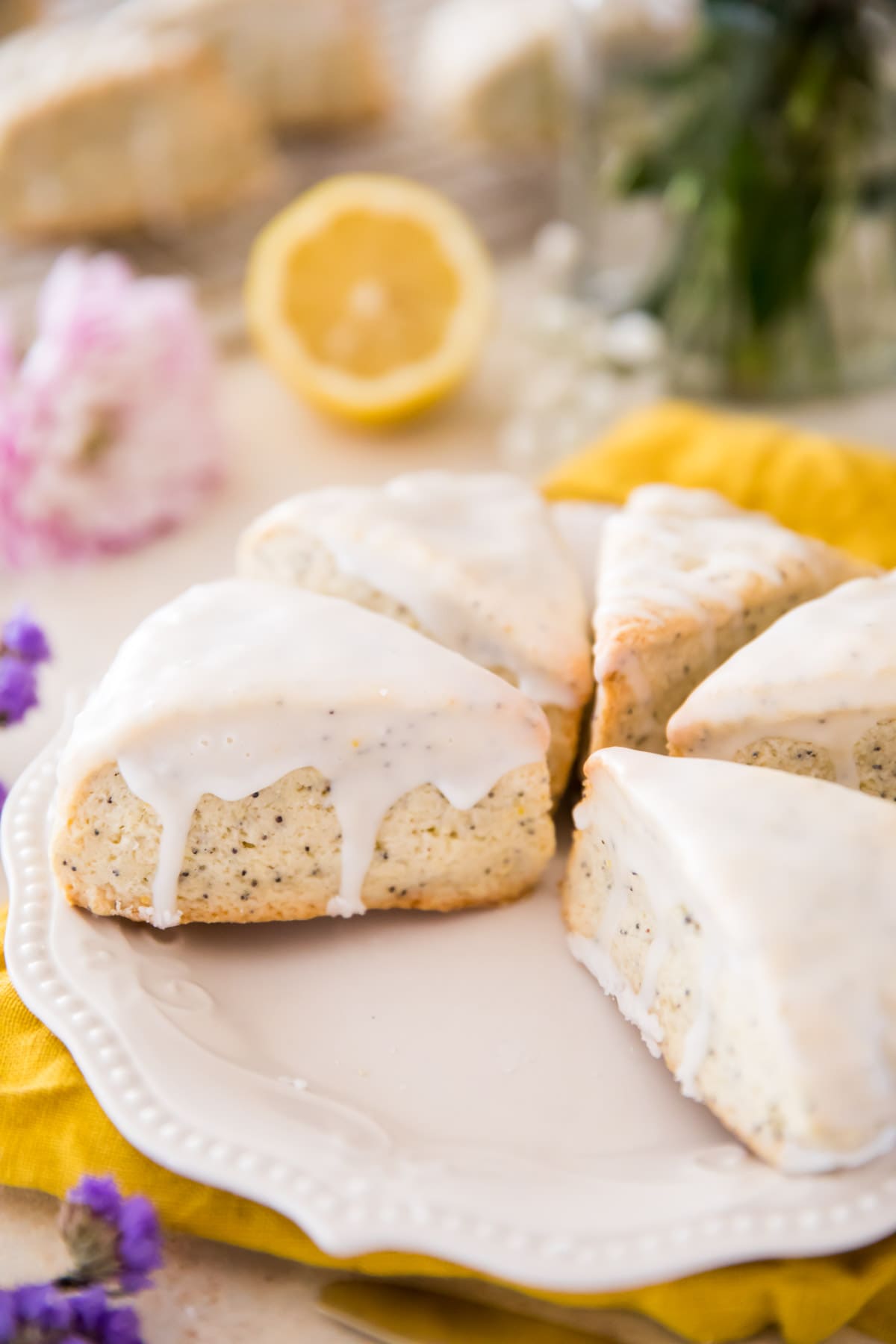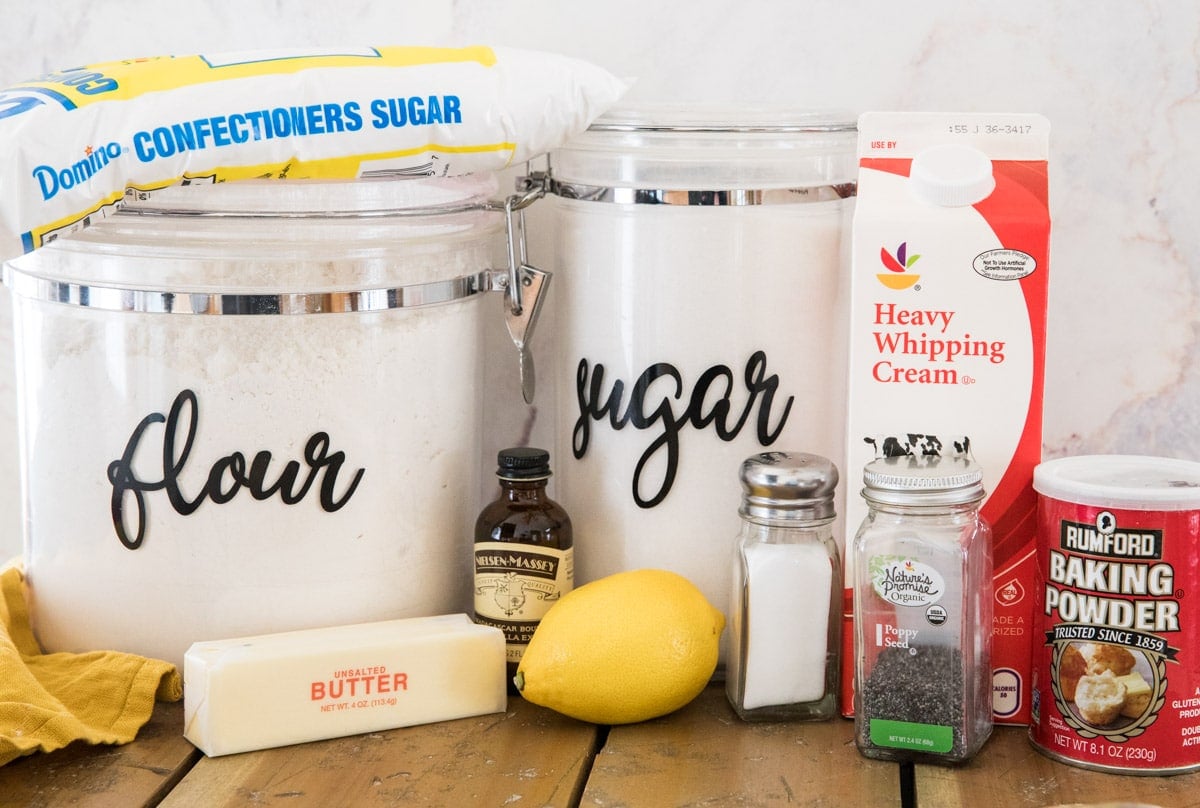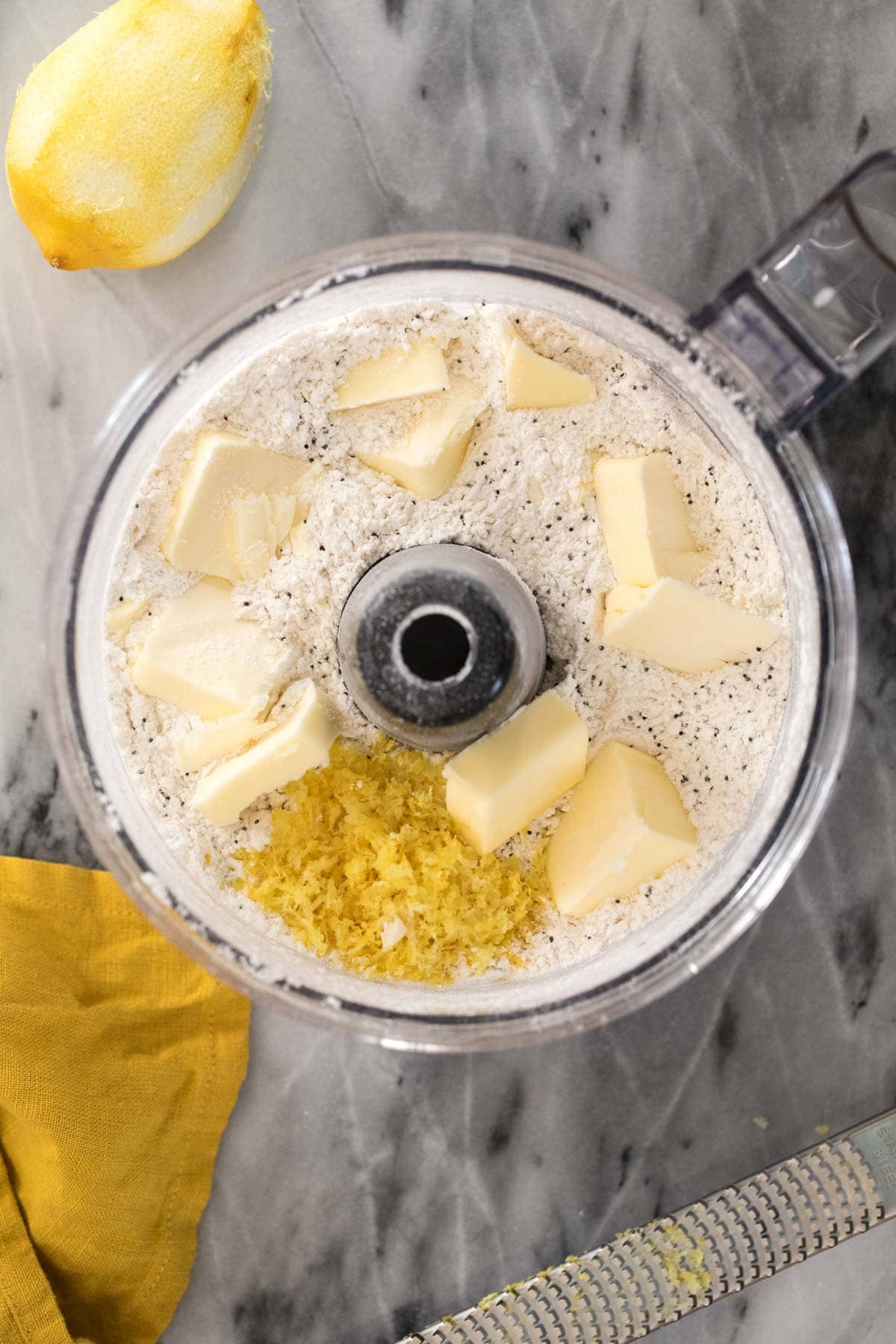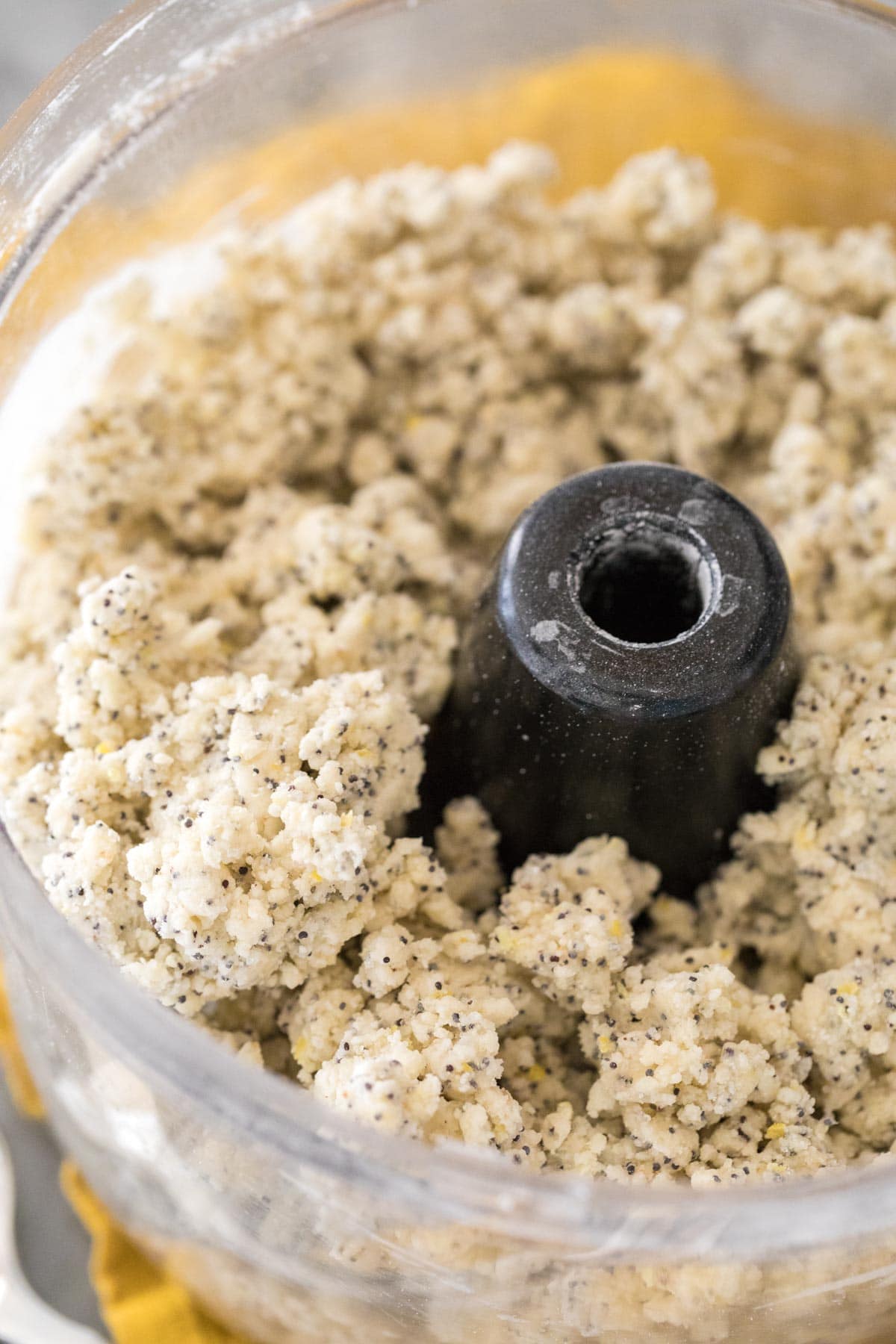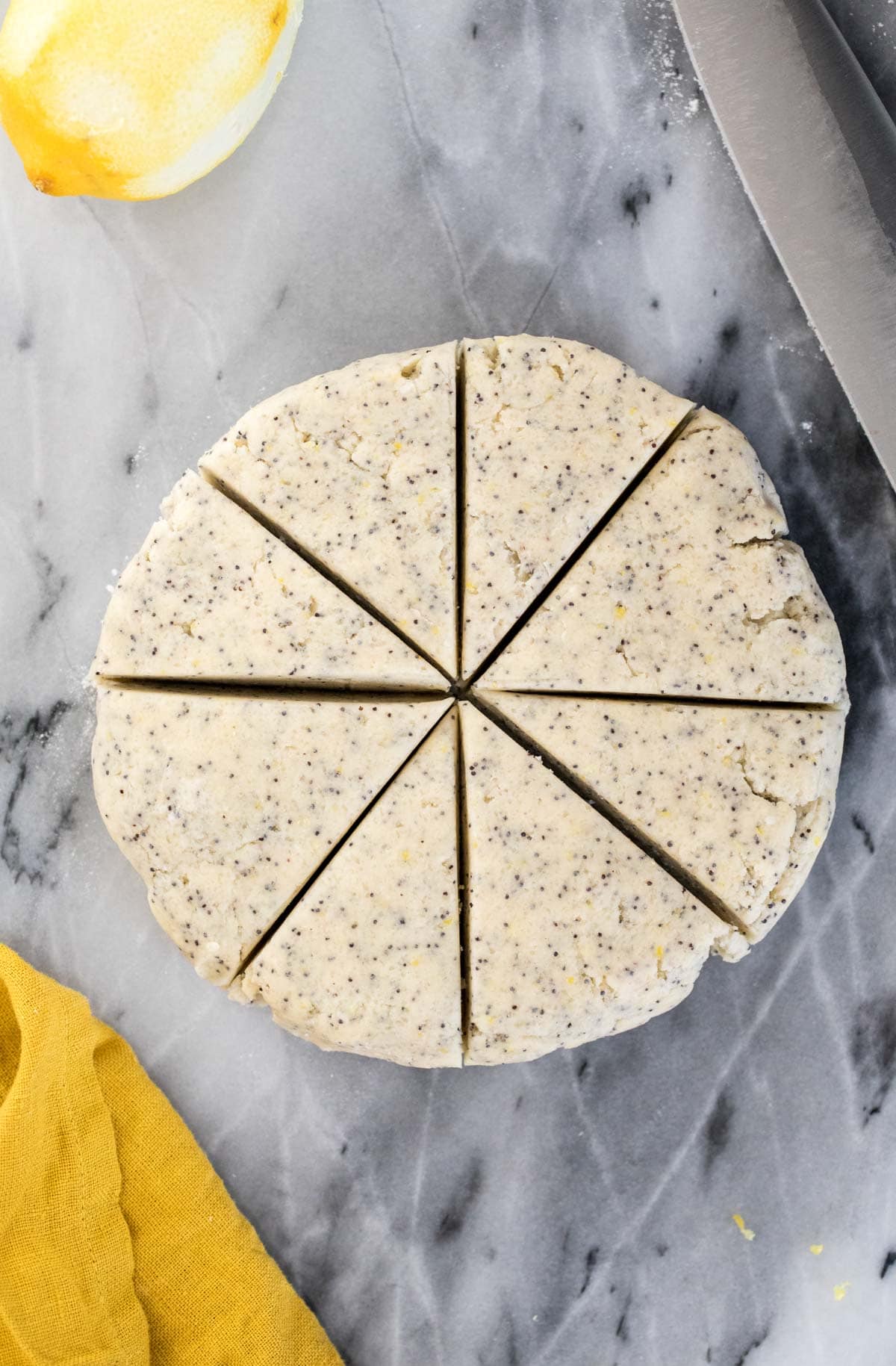Today’s recipe is a sunny cross between my classic scone recipe and my lemon poppy seed muffins. Simple to make, buttery, light, and so soft they nearly melt in your mouth, drizzled with a fresh lemon glaze, I think you’re really going to love these. I use a food processor to do all of the heavy lifting for today’s recipe (the same one that we used to make my pizza sauce earlier this week, if you don’t already have one you really need to get one!) but do include some notes further down in the post to make the scones without one.
Ingredients
As always, please note that this is just an overview of the ingredients chosen for these lemon poppy seed muffins and why. Please scroll down to the recipe card for the full recipe and exact ingredient amounts!
All purpose flour. Make sure you measure the flour properly so that your scone dough isn’t too dry. Granulated sugar. I use a bit more than I do in my classic scone recipe to counter the tartness of the lemon (without overpowering it) and the nutty flavor of the poppy seeds. Baking powder. To help give our scones a nice lift and perfect, tender interiors. Salt. If you’re using salted butter (like I did in my video, because I ran out of unsalted just before filming), leave this out. Butter. Make sure it’s nice and cold! You want to move quickly and not over-handle the dough when making lemon poppy seed scones to keep the butter from becoming too warm (warm butter = dense scones). For best results, toss your butter in the freezer 15 minutes to an hour before you begin making this recipe. Heavy cream. The high fat content of heavy cream (as opposed to milk) helps make these scones extra tender, soft, and delicious. It’s responsible for their deliriously delicious texture. Vanilla extract. Mix a splash with the cream before adding to the scone dough. It adds a nice depth of flavor. Lemon zest. Toss this in with the butter, the food processor will do a good job of breaking up the zest and distributing lemony flavor through the dough. When zesting, avoid the pith (the white, papery layer close to the lemon fruit) which is bitter. Poppy seeds. A little goes a long way! When I first tried this recipe I started with three whopping tablespoons of poppy seeds. Yikes! That did not go over well and all I could taste was crunchy seeds, and their slightly-too-savory flavor overpowered the lemon. A few more test-runs and a Tablespoon turned out to be the perfect amount.
Then don’t forget about the glaze! Whisk together powdered sugar (AKA icing sugar), lemon juice, water, and a tiny splash of vanilla extract. The glaze is what really makes the lemon flavor pop here (it’s similar to the one I use in my lemon poppy seed muffins lemon brownies), and your scones won’t have nearly as strong of a lemony flavor without it.
Use a Food Processor!
One of the most important tips I can give you for tender, airy, buttery scones is to not overwork the dough (though this recipe is more forgiving than some). A food processor is perfect for this because it does a great job of evenly cutting the butter into the dough without overworking it (another recipe where I use this technique is my pie crust recipe!). I pulse the butter and lemon zest into the dry ingredients until both are well distributed and cut into the batter and the mixture resembles fine crumbs. As a bonus, the blade of the food processor does a great job of helping the oils escape from the lemon zest and infuses the dough with fresh lemon flavor.
Once you’ve incorporated the butter, add the remaining liquid ingredients (heavy cream and vanilla) and pulse just until the dough begins to clump together (as shown in the photo above). Now we switch to using our hands and will do some brief laminating. Remember all the laminating we did with my puff pastry recipe? It’s like that, but much faster. Fold the dough over itself several times to encourage tall, flaky, airy scones, then form the dough into a disc.
Can I Make This Recipe Without a Food Processor?
Yes! If you don’t have a food processor you can either use a pastry cutter to cut the butter into the batter or you can use a grater and use the same technique that I use in my biscuit recipe. Keep in mind scone dough is fairly dry, and if you aren’t using a machine to do the dirty work, it’s going to be a bit of an arm workout, you may even need to use your hands to work the dough together a bit. It will come together, it’s just a bit more challenging.
Storing & Making in Advance
Scones are best enjoyed fresh, and these lemon poppyseed scones are no exception. However, if you must store them, I recommend doing so in an airtight container and enjoying within 2 days. They taste best when slightly warmed, but if they’ve been iced (and so much of the lemon flavor comes from the glaze, so they should be) some of the glaze will melt off. This recipe may also be frozen before or after baking. To freeze before baking, follow the recipe through forming the dough and cutting into wedges, then freeze the wedges in an airtight container. Freeze for up to three months. Scones may take a few extra minutes in the oven when being baked from frozen. To freeze after baking, allow the cooked scones to cool completely and then freeze in an airtight container for 2-3 months.
Make them Mini!
To make these into mini lemon poppy seed scones, divide the dough into two even parts and form each into a disc about 5″ wide. Cut each disc into 8 wedges and bake for about 13 minutes for adorable, two-bite scones!
More Recipes You Might Like:
Lemon Cookies Pumpkin Scones Chocolate Scones Lemon Brownies
Enjoy, and don’t forget to check out my how-to video in the recipe! If you try this one leave a comment and let me know what you think!
